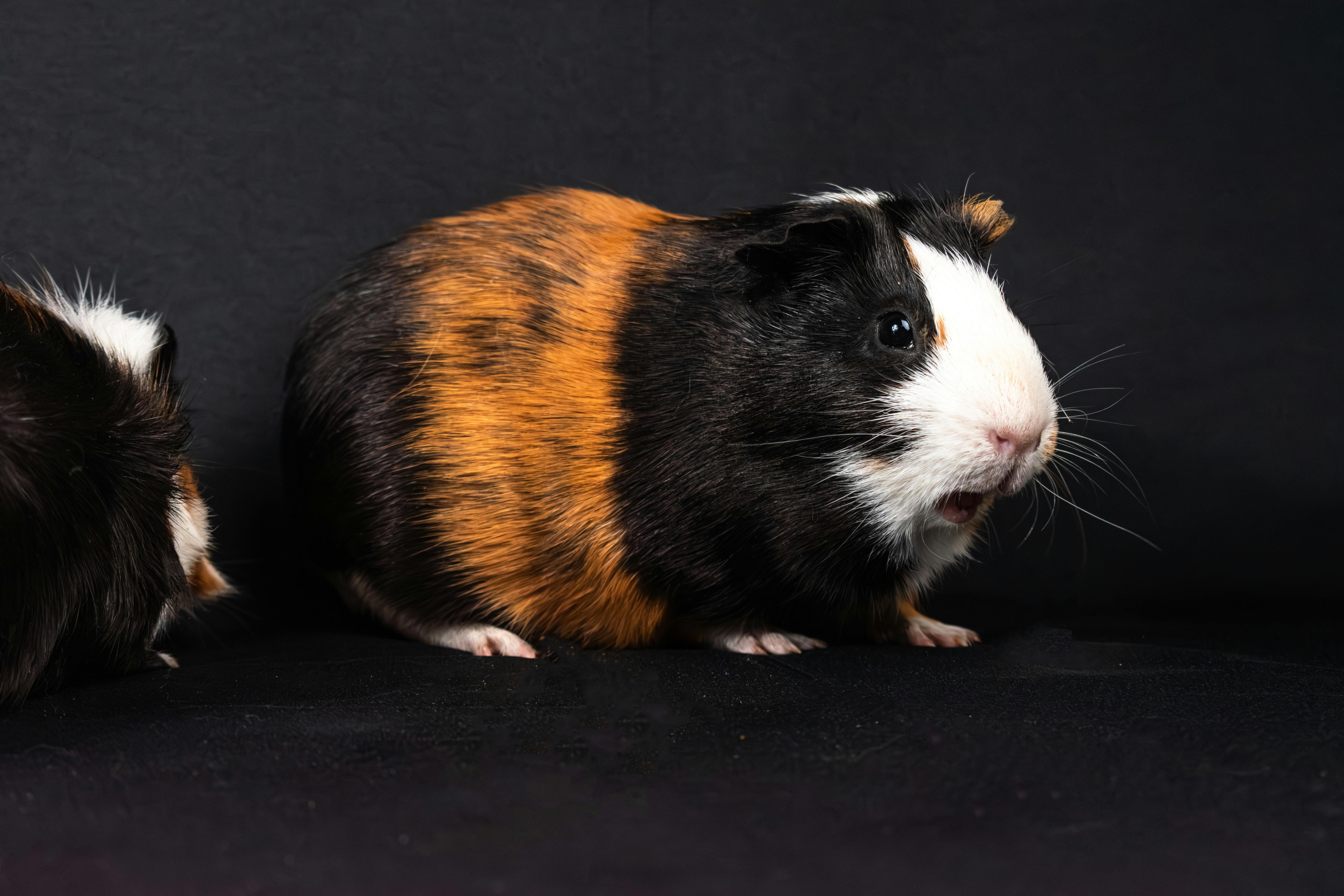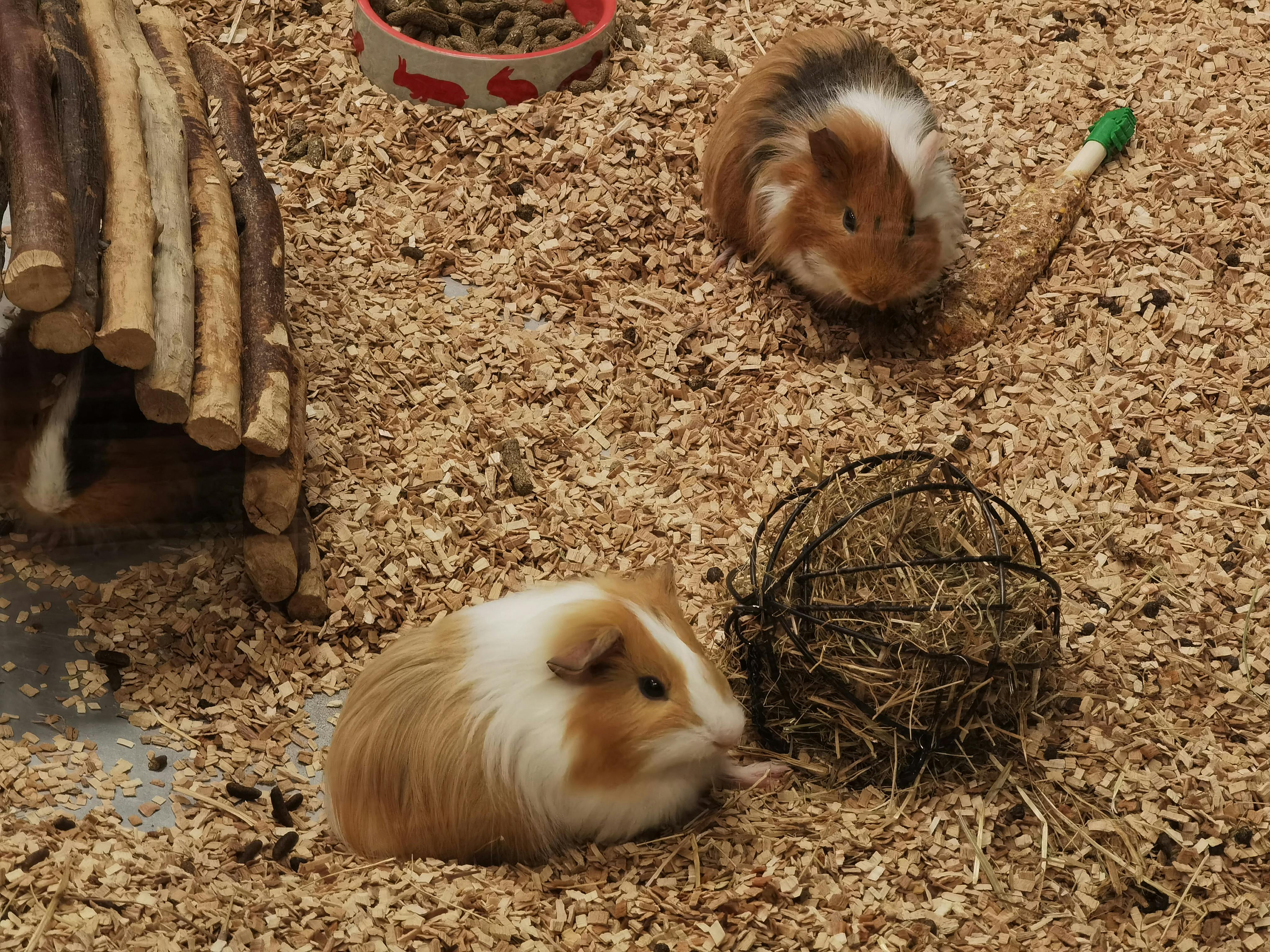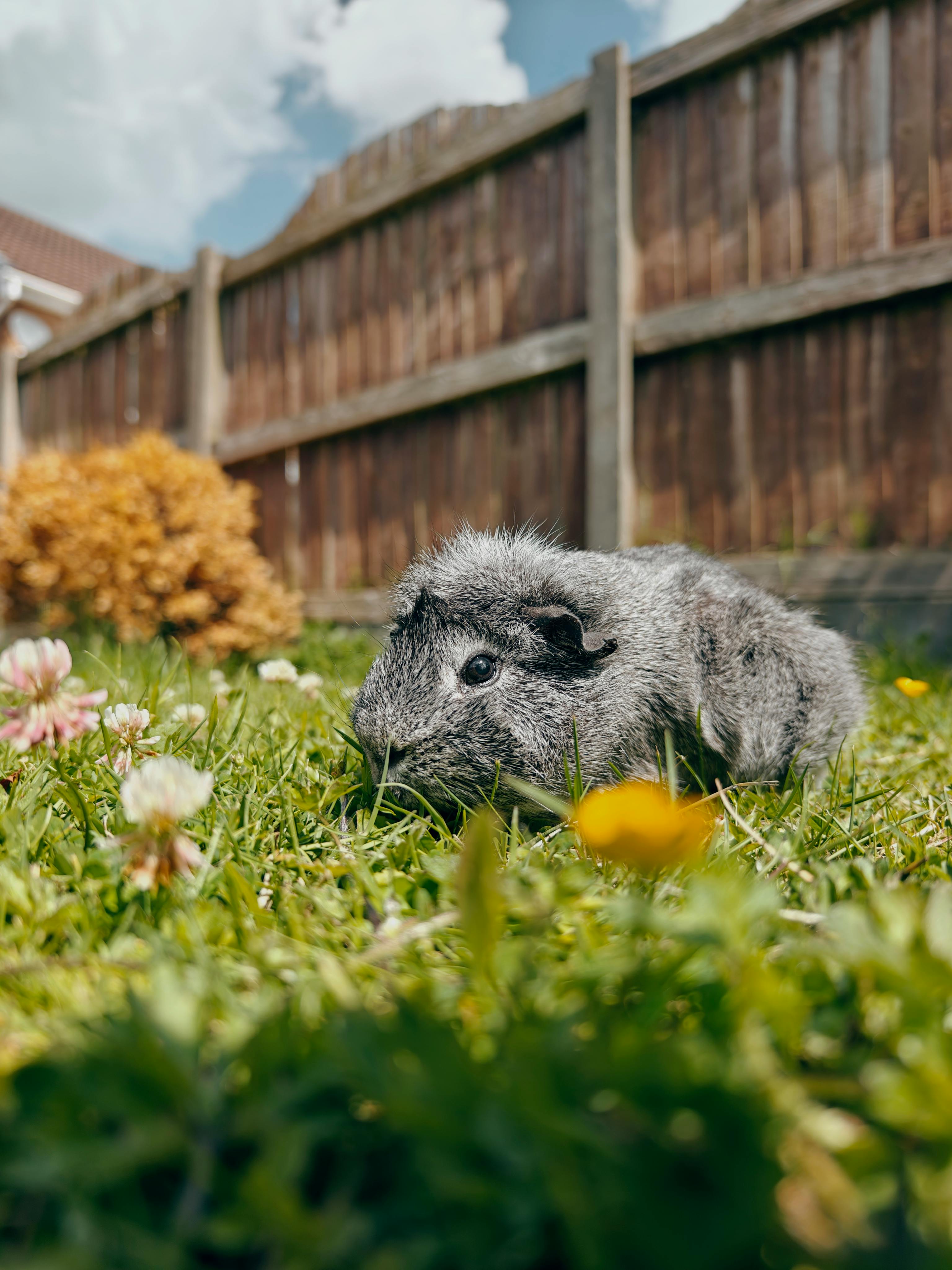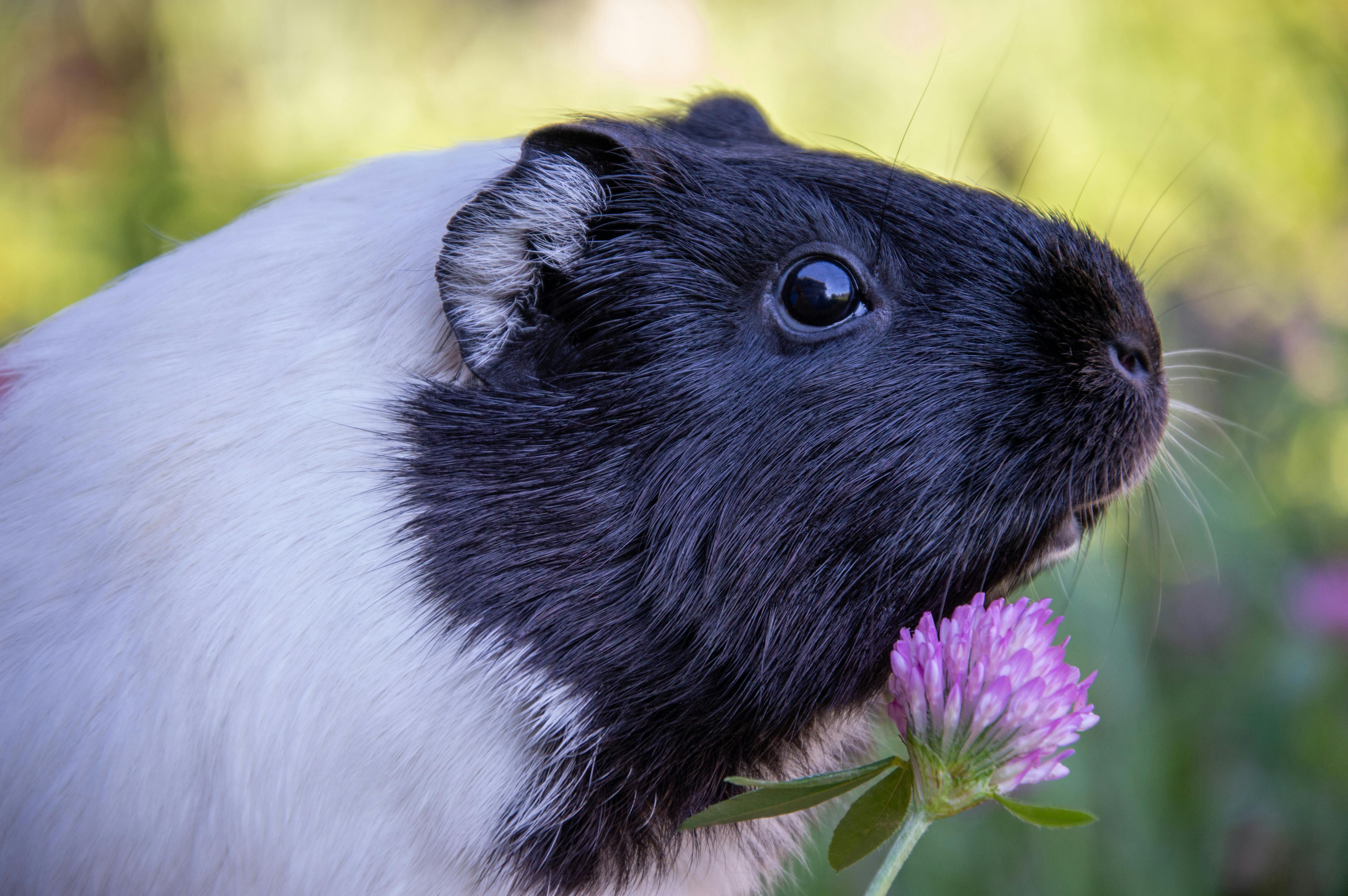Guinea Pig Grooming Essentials: Complete Care Guide

Table of Contents
The Complete Guinea Pig Grooming Guide: Essential Care for Health and Comfort
Proper grooming is essential for your guinea pig's health, comfort, and wellbeing. This comprehensive 2,000+ word guide covers everything you need to know about guinea pig grooming, from basic nail care to advanced coat maintenance. Different breeds have different grooming requirements, but all guinea pigs benefit from regular, proper grooming that prevents health issues and strengthens the bond between you and your pet.
Understanding Guinea Pig Grooming Needs
Guinea pigs have unique grooming requirements that differ from other small pets. Understanding these needs is crucial for maintaining their health and comfort:
Why Grooming is Essential
- Health Prevention - Prevents matting, skin issues, and infections
- Comfort Maintenance - Keeps coat clean and comfortable
- Early Problem Detection - Allows you to spot health issues early
- Bonding Opportunity - Strengthens trust and relationship
- Natural Behavior Support - Mimics natural grooming behaviors
- Stress Reduction - Regular handling reduces stress over time
Breed-Specific Grooming Requirements
- American/English - Short, smooth coat, minimal grooming needed
- Abyssinian - Short, rough coat with rosettes, moderate grooming
- Peruvian - Long, silky coat, daily grooming essential
- Silkie - Long, smooth coat, daily brushing required
- Texel - Long, curly coat, extensive grooming needed
- Skinny Pigs - Hairless, special skin care required
Essential Grooming Tools and Supplies
Having the right tools makes grooming safer and more effective:
Basic Grooming Kit
- Small Animal Nail Clippers - Essential for nail trimming
- Soft-Bristled Brush - For short-haired guinea pigs
- Wide-Tooth Comb - For long-haired breeds
- Fine-Tooth Comb - For removing tangles and mats
- Styptic Powder - For stopping bleeding if nails are cut too short
- Small Scissors - For trimming around eyes and removing mats
Advanced Grooming Tools
- De-matting Comb - For stubborn tangles
- Slicker Brush - For removing loose hair
- Bathing Supplies - Small animal shampoo, towels, blow dryer
- Ear Cleaning Supplies - Cotton swabs, ear cleaning solution
- Dental Care Tools - For checking teeth and mouth
- Grooming Table - Non-slip surface for safe grooming
Nail Trimming: Essential for Health and Comfort
Guinea pig nails grow continuously and require regular trimming to prevent health problems:
Why Nail Trimming is Critical
- Prevents Overgrowth - Long nails can curl and cause pain
- Reduces Injury Risk - Prevents nails from getting caught or broken
- Improves Mobility - Allows normal walking and movement
- Prevents Foot Problems - Reduces risk of bumblefoot
- Maintains Hygiene - Prevents dirt and bacteria buildup
- Comfort - Ensures comfortable movement and rest
Nail Trimming Frequency
- Active Guinea Pigs - Every 3-4 weeks
- Less Active Guinea Pigs - Every 2-3 weeks
- Young Guinea Pigs - Every 2-3 weeks (faster growth)
- Senior Guinea Pigs - Every 3-4 weeks (slower growth)
- Indoor-Only Guinea Pigs - Every 2-3 weeks
- Guinea Pigs with Access to Rough Surfaces - Every 4-6 weeks
Step-by-Step Nail Trimming Process
Preparation Phase
- Choose the Right Time - When guinea pig is calm and relaxed
- Gather Supplies - Nail clippers, styptic powder, treats
- Create Comfortable Environment - Quiet, well-lit area
- Have Helper Ready - Someone to hold guinea pig if needed
- Prepare for Accidents - Have styptic powder and clean cloths ready
Trimming Technique
- Hold Guinea Pig Securely - Support body, expose one foot at a time
- Identify the Quick - Pink area inside the nail (avoid cutting this)
- Cut at 45-Degree Angle - Just before the quick
- Cut Small Amounts - Better to cut too little than too much
- Check Each Nail - Ensure clean, smooth cut
- Reward with Treats - Positive reinforcement after each foot
Handling Accidents
- If You Cut the Quick - Apply styptic powder immediately
- Apply Pressure - Hold clean cloth against bleeding nail
- Stay Calm - Guinea pig will sense your anxiety
- Comfort Your Pet - Speak softly and offer treats
- Monitor for Infection - Watch for signs of infection
- Learn from Mistake - Cut less next time
Brushing and Coat Care: Maintaining Healthy Fur
Regular brushing keeps your guinea pig's coat healthy, clean, and free from tangles:
Benefits of Regular Brushing
- Removes Loose Hair - Prevents hairballs and matting
- Distributes Natural Oils - Keeps coat shiny and healthy
- Stimulates Blood Circulation - Promotes healthy skin
- Prevents Tangles - Especially important for long-haired breeds
- Early Problem Detection - Allows you to spot skin issues
- Bonding Time - Strengthens relationship with your pet
Breed-Specific Brushing Requirements
Short-Haired Breeds (American, English, Abyssinian)
- Frequency: 1-2 times per week
- Tools: Soft-bristled brush or grooming mitt
- Technique: Brush in direction of hair growth
- Focus Areas: Back, sides, and rump
- Special Care: Check for rosettes in Abyssinians
Long-Haired Breeds (Peruvian, Silkie, Texel)
- Frequency: Daily brushing essential
- Tools: Wide-tooth comb, fine-tooth comb, slicker brush
- Technique: Start with wide-tooth comb, finish with fine-tooth
- Focus Areas: Entire body, especially behind ears and under belly
- Special Care: Prevent tangles and mats from forming
Brushing Techniques and Tips
Basic Brushing Process
- Choose the Right Time - When guinea pig is calm and relaxed
- Start Gently - Use soft strokes to acclimate your pet
- Brush in Sections - Work systematically through the coat
- Check for Tangles - Address any mats or tangles immediately
- Finish with Treats - Positive reinforcement for good behavior
- Clean Tools - Remove hair from brushes and combs
Dealing with Mats and Tangles
- Prevention is Key - Regular brushing prevents most mats
- Work Gently - Never pull or tug on tangles
- Use Fingers First - Try to separate with fingers
- Apply Conditioner - Use small amount of pet-safe conditioner
- Cut if Necessary - Use scissors as last resort
- Seek Professional Help - For severe matting
Bathing: When and How to Bathe Your Guinea Pig
Guinea pigs rarely need baths, but there are times when bathing is necessary:
When Bathing is Necessary
- Severe Soiling - When spot cleaning isn't sufficient
- Medical Reasons - As directed by veterinarian
- Flea Treatment - When treating for external parasites
- Skin Conditions - Medicated baths for skin issues
- Show Preparation - For guinea pig shows or competitions
- Extreme Odor - When normal grooming isn't enough
When NOT to Bathe
- Regular Maintenance - Guinea pigs are naturally clean
- Minor Soiling - Spot cleaning is usually sufficient
- Stressful Situations - Don't add stress to already stressed guinea pig
- Cold Weather - Risk of chilling and illness
- Illness - Unless directed by veterinarian
- Very Young Guinea Pigs - Under 3 months old
Safe Bathing Process
Preparation
- Choose Warm Day - Ensure room is warm and draft-free
- Gather Supplies - Shampoo, towels, blow dryer, treats
- Prepare Water - Lukewarm water, not hot or cold
- Have Helper Ready - Extra hands make bathing easier
- Prepare Drying Area - Warm, comfortable place to dry
Bathing Steps
- Wet Guinea Pig Gently - Use cup or gentle spray
- Apply Shampoo - Use small animal shampoo only
- Massage Gently - Work shampoo into coat carefully
- Rinse Thoroughly - Remove all shampoo residue
- Wrap in Towel - Gently pat dry, don't rub
- Use Blow Dryer - On low heat, keep moving
- Ensure Complete Drying - Prevent chilling and illness
Ear and Eye Care: Maintaining Sensory Health
Regular ear and eye care helps prevent infections and maintains your guinea pig's sensory health:
Ear Care
- Regular Inspection - Check ears weekly for debris or discharge
- Gentle Cleaning - Use cotton swab with ear cleaning solution
- Never Insert Deeply - Only clean visible parts of ear
- Watch for Signs of Infection - Discharge, odor, or head shaking
- Professional Help - Seek veterinary care for ear problems
Eye Care
- Daily Inspection - Check eyes for discharge or irritation
- Gentle Cleaning - Use damp cotton ball if needed
- Trim Hair Around Eyes - Prevent hair from irritating eyes
- Watch for Changes - Cloudiness, discharge, or squinting
- Immediate Veterinary Care - For any eye problems
Dental Care: Maintaining Oral Health
Guinea pig teeth grow continuously and require proper care to prevent dental problems:
Dental Health Monitoring
- Regular Inspection - Check teeth weekly for overgrowth
- Watch for Signs of Problems - Drooling, difficulty eating, weight loss
- Provide Chewing Materials - Hay, wooden toys, safe branches
- Monitor Eating Habits - Changes in appetite or eating behavior
- Professional Dental Care - Regular veterinary checkups
Preventing Dental Problems
- Unlimited Hay - Essential for natural tooth wear
- Appropriate Chew Toys - Wooden blocks, apple branches
- Proper Diet - Balanced nutrition supports dental health
- Regular Exercise - Activity promotes natural chewing
- Stress Reduction - Stress can affect dental health
Grooming Challenges and Solutions
Every guinea pig is different, and some may present unique grooming challenges:
Common Grooming Challenges
Struggling or Nervous Guinea Pigs
- Start Slowly - Begin with short, positive sessions
- Use Treats - Reward calm behavior with treats
- Create Routine - Consistent timing helps reduce anxiety
- Stay Calm - Your calmness helps your guinea pig relax
- Consider Professional Help - Groomer or veterinarian if needed
Matted or Tangled Coats
- Prevention is Best - Regular brushing prevents most mats
- Work Gently - Never pull or tug on tangles
- Use Conditioner - Pet-safe conditioner can help loosen tangles
- Cut Carefully - Use scissors as last resort
- Seek Professional Help - For severe matting
Overgrown Nails
- Don't Panic - Overgrown nails can be trimmed safely
- Trim Gradually - Cut small amounts over several sessions
- Watch for Quick - Be extra careful with overgrown nails
- Seek Help if Needed - Professional groomer or veterinarian
- Prevent Future Problems - Regular trimming schedule
Grooming Schedule and Routine
Establishing a consistent grooming routine helps maintain your guinea pig's health and comfort:
Daily Grooming Tasks
- Quick Health Check - Look for any obvious problems
- Spot Clean if Needed - Remove any soiled areas
- Check Food and Water - Ensure fresh supplies
- Observe Behavior - Note any changes in activity or appetite
Weekly Grooming Tasks
- Full Body Inspection - Check for any health issues
- Brush Coat - Remove loose hair and prevent tangles
- Check Nails - See if trimming is needed
- Clean Ears and Eyes - Gentle cleaning if needed
- Check Teeth - Look for overgrowth or problems
Monthly Grooming Tasks
- Trim Nails - Regular nail maintenance
- Deep Coat Care - Thorough brushing and inspection
- Bath if Needed - Only if necessary
- Tool Maintenance - Clean and sanitize grooming tools
- Health Assessment - Overall health evaluation
Grooming Safety and Best Practices
Safety should always be the top priority when grooming your guinea pig:
Safety Guidelines
- Never Force - Stop if your guinea pig is stressed
- Use Appropriate Tools - Right tools for the job
- Work in Good Light - See what you're doing clearly
- Have Help Available - Extra hands when needed
- Stay Calm - Your calmness helps your pet relax
- Know When to Stop - Recognize signs of stress
Best Practices
- Start Young - Begin grooming when guinea pig is young
- Make it Positive - Use treats and praise
- Be Consistent - Regular routine helps
- Learn Your Pet - Every guinea pig is different
- Seek Help When Needed - Don't hesitate to ask for help
- Keep Learning - Continue to improve your skills
Frequently Asked Questions
Q: How often should I trim my guinea pig's nails?
A: Most guinea pigs need nail trimming every 2-4 weeks. Active guinea pigs may need it less frequently, while less active ones may need it more often. Check nails weekly to determine when trimming is needed.
Q: Can I use human shampoo on my guinea pig?
A: No, never use human shampoo on guinea pigs. Use only shampoos specifically designed for small animals, as human shampoos can be too harsh and cause skin irritation.
Q: What should I do if my guinea pig has mats in their fur?
A: Work gently to separate mats with your fingers first. If that doesn't work, use a pet-safe conditioner and a wide-tooth comb. As a last resort, carefully cut out the mat with scissors, but avoid cutting the skin.
Q: How can I make grooming less stressful for my guinea pig?
A: Start with short, positive sessions and gradually increase the time. Use treats and praise, stay calm, and work in a quiet environment. If your guinea pig is very stressed, consider seeking help from a professional groomer.
Q: Do I need to bathe my guinea pig regularly?
A: No, guinea pigs rarely need baths. They are naturally clean animals. Only bathe when absolutely necessary, such as when they are very dirty or soiled, or as directed by a veterinarian.
Conclusion
Proper grooming is an essential part of guinea pig care that promotes health, comfort, and strengthens the bond between you and your pet. By establishing a regular grooming routine and using the right techniques and tools, you can help your guinea pig look and feel their best while catching potential health problems early.
Ready to start a grooming routine? Begin with basic nail trimming and brushing, and gradually work up to more advanced grooming tasks. Remember to always prioritize your guinea pig's comfort and safety, and don't hesitate to seek professional help when needed!
## Related Reading If you found this article helpful, you might also enjoy: • [Complete Guinea Pig Cage Setup Guide](/blog/guinea-pig-cage-setup-complete-guide) - The Complete Guinea Pig Cage Setup Guide: Creating the Perfect Home Creating the perfect guinea pig cage is one of the most important aspects of guinea pig c... • [Guinea Pig Feeding Guide: Complete Nutrition Guide](/blog/guinea-pig-feeding-guide-complete-nutrition) - The Complete Guinea Pig Nutrition Guide: Feeding for Optimal Health Proper nutrition is the foundation of guinea pig health and longevity. This comprehensive... These articles explore similar themes and can help deepen your understanding of the topic.


Comments (0)
Want to leave a comment?
Please Login or Register to join the conversation.